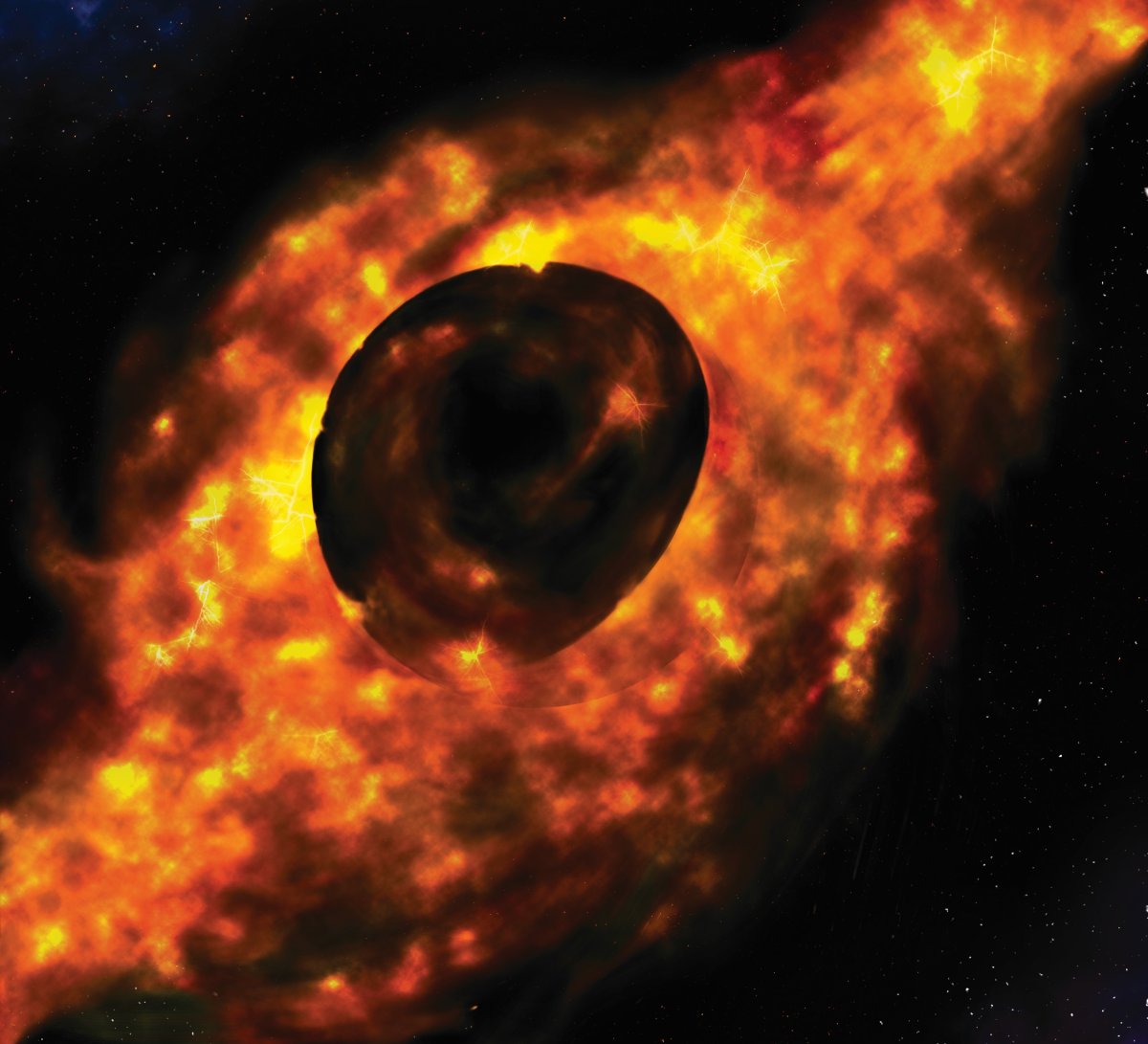Scientists may have found "the most hellish place in the Universe" after discovering the fastest black hole on record.
The team from the Australian National University, led by associate professor Christian Wolf, says that the enormous object—which it estimates to be 17 billion times the mass of our Sun—is also the most luminous known object in the universe and offers a window into the distant past, just after the Big Bang.
"We were happily surprised by finding the object," Wolf told Newsweek. The results were published in the journal Nature Astronomy.
It was first detected using a 2.3-meter telescope at the Australian National University's Siding Spring Observatory. But its full nature was not confirmed until the team was able to observe it through one of the largest telescopes in the world—the European Southern Observatory's Very Large Telescope.
"The black hole is seen about 12 billion years in the past, it has taken the light that long to reach us," Wolf said. "However, as the Universe continuously expands and is now larger than it was while the light traveled, the black hole is now further away than 12 billion light years, more like 24 billion light years."
But how can we see an object so far away, especially one with such immense gravity that not even light can escape from it?
"Black holes are only visible to our eyes when they grow," Wolf said. "The matter they eat is first drawn into what's called an accretion disc, which is a holding pattern in which the material circles the black hole ever closer until it gets swallowed."
If you look at the illustration below, the accretion disc can be seen as the bright, orange cloud circling the black hole.

"A lot of heat is produced in the process that makes fast-growing black holes shine brighter than entire galaxies," Wolf said. "This new object shines as bright as 500 trillion suns, or 20,000 times brighter than our whole Milky Way Galaxy."
Indeed, this black hole has the brightest and largest accretion disc of any black hole discovered to date. "The accretion disc is seven light years across, which is one and a half times the distance from the Solar System to the nearest star, Alpha Centauri, [and] the mass of the black hole is about 17 billion times the mass of the Sun," Wolf said.
"To grow rapidly, they need to pull stars and gas clouds out of stable orbits and drag them into their accretion disc. [This] means it eats the most amount of matter per day—about a sun's worth of material per day."
These numbers are all very impressive, but what would the conditions actually be like around this cosmic colossus?
"We need to assume that this [supermassive black hole] is the most violent place that we know in the Universe," Wolf said. "[The accretion disc] is like a giant hurricane with the black hole in the eye of the storm. The clouds are moving at ever increasing speeds the closer we get to the hole and can reach 100,000 km per second. They move as far in a second as the Earth moves in an hour; they cover the circumference of the Earth in under a second.
"The disc is hot, from thousands of degrees Fahrenheit on the outside to many 10,000 degrees Fahrenheit at the edge of the eye of the storm. The whole storm is threaded with strong magnetic fields and there are lightning bolts of cosmic size discharging everywhere."
Wolf added: "We have now found the possibly most hellish place in the Universe."
But is this black hole a risk to life on Earth today?
"We see it in the state it was in 12 billion years ago, and thus much may have changed since," Wolf said.
In other words, we are looking at this black hole just 1.8 billion years after the Big Bang.
Co-author Rachel Webster, a professor in physics at the University of Melbourne, added that the universe 12 billion years ago was a very different place to how it is today. "In the adolescent universe, matter was moving chaotically and feeding hungry black holes," she said in a statement. "Today, stars are moving orderly at safe distances and only rarely plunge into black holes."
Thus, Wolf said that there is no need to be afraid of these black holes today. "Not only is the monster far away, so far that its light has traveled over 12 billion years to reach us, but that also means that the black hole has stopped growing long ago," he said.
Uncommon Knowledge
Newsweek is committed to challenging conventional wisdom and finding connections in the search for common ground.
Newsweek is committed to challenging conventional wisdom and finding connections in the search for common ground.
About the writer
Pandora Dewan is a Senior Science Reporter at Newsweek based in London, UK. Her focus is reporting on science, health ... Read more
To read how Newsweek uses AI as a newsroom tool, Click here.






